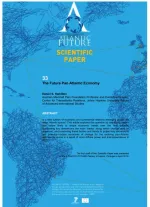Geometries of Human Mobility in the Atlantic Space

Scientific paper, nº. 13
This paper is concerned with tracking trends in international migration within the Atlantic basin between 1990 and 2013 and the historical patterns characterizing Atlantic mobility on which these two decades build. The means of tracking migration, of regulating it, and of requesting migrants’ political and cultural commitment to their host countries have shifted with global economic reconfigurations. Before proceeding to global patterns and concerns around migration and a brief overview of the history of the Atlantic basin as a social space structured by mobility, I reflect on the conceptual tools and analytic strategies which current quantitative sources on human mobility take for granted. For example, historical trajectories and political context are absent from the analyses. Policy driven databases produced by various agencies of international governance afford a vast yet superficial grasp of global mobility patterns, which can be complemented and complicated through smaller scale and longitudinal projects that provide qualitative depth to our understanding of human mobility. Human movement is crucially structured by economic differentials and opportunity, but also by shared colonial histories that sowed specific